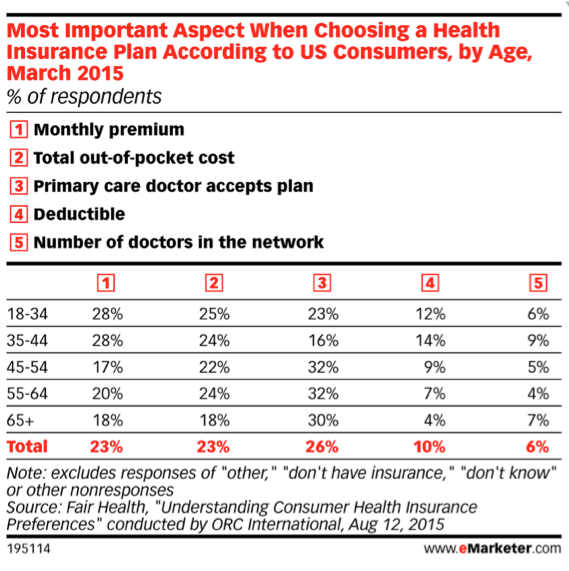
Get your FREE 30-day trial.
Please complete all fields.
Ask Americans the significance of April 15, and most will be quick to tell you it's the deadline for filing tax returns. What if you inquire about the importance of November 1, 2016? Despite its impact on every citizen, few who work outside of health insurance or human resources know that it's the beginning of a 3-month period during which everyone must make key decisions regarding their health insurance plans.
Better known as Open Enrollment, this window is the only chance for individuals and families to enlist in or modify elections for private, employer-sponsored, and government-sponsored health insurance programs (unless a qualifying event occurs).
Of course, if you're a healthcare payer, you're already well versed in the intricacies of Open Enrollment. You undoubtedly have November 1 circled on your calendar, and will probably take a well-deserved vacation when the season concludes on January 31, 2017. But before you pack your bags, let's take a look at some of the factors that influence Open Enrollment decisions.
Much like retailers have Black Friday, the Open Enrollment period is a make or break milestone for health insurers. The same measures that shape retail performance-acquisition and retention (churn)-determine the success of the ~90-day Open Enrollment season.
The good news is that in general, member satisfaction is on the rise. A recent J.D. Power report measured 134 health plans in 18 regions throughout the United States, and shows favorable improvements from 2014 to 2015.
Perhaps most importantly, the survey illustrates that members who view their health plan provider as a trusted resource are far less likely to churn.
Existing and potential plan members consistently reward those who deliver the information they want, when they need it. They assign value to those who simplify their decisions with quality information, consistent communication, and delivery via member-preferred channels such as websites, portals, email, mobile apps, text and social.

Millennials are a critical audience and require special consideration. Through the Affordable Care Act, young adults can stay on their parent's plan until December 31 of the year in which they turn 26. Afterwards, they too are required to make their health insurance decisions. Millennials epitomize the always-connected consumer, and magnify the importance of a cohesive digital communications strategy. When it comes time to make their decisions, you can be absolutely certain they'll turn to their preferred channels for guidance.
So what are some tactics healthcare payers can use to attain trusted advisor status?
As with all marketing, content is king. It's important to acknowledge that members are not experts in choosing health plans-and quite frankly, it's not a task most look forward to undertaking. A winning strategy is based on delivering easily understood, pertinent information that makes your plan the easy choice.
One of the key goals is to reduce call center strain. It's expensive, and often a last resort for members of all ages. Do you understand which topics are most often fielded by your call center, and are you proactively pushing that information to existing and prospective members?
As a starting point, consider these factors that most heavily influenced healthcare plan decisions in 2015.

As we've already discussed, members of all ages have a digital-first mindset. For many, social media will be a critical resource as they explore their healthcare options. This presents a tremendous opportunity for insurers to drive engagement.
Social listening with Marketing Cloud can provide key insights into conversations taking place across the web and owned channels. For example, perhaps a Twitter user asks her followers, "I need to pick my health plan. Which provides the best coverage?".
And with 2016 being a Presidential election year, #healthcare is most certain to be a hot conversation on social. Through social listening, insurers can stay abreast of trending topics. Additionally, they can monitor the tone/sentiment of those discussions, as well as the states where conversations are taking place (which can help focus on which state exchange and insurer is relevant-even if they're not specifically mentioned). With Marketing Cloud and Service Cloud, conversations from key influencers can be tagged and routed to customer service, communications and other groups for additional attention.
The same key conversations you're listening to and organically engaging with can be used to target advertising as well. For example, if a Twitter user talks about "selecting a health plan", or "health care coverage" on Twitter, they're clearly indicating purchase intent during the open enrollment period. You can automatically add them to an advertising segment and send them a highly targeted ad for your plans. At the same time, you can overlay a list of your current customers to suppress ads for people who have already selected your company in open enrollment this year.
Another powerful option for reaching new prospects during open enrollment is with lookalike advertising. To do this, you can securely send a hashed version of your current health care members to Facebook or Twitter using SHA-256, so that personally identifiable information never leaves Marketing Cloud. Then, Facebook uses the totality of data available to them (including demographic data, psychographic data, pages you've liked, apps you've downloaded, job title listed, education listed, and so on) to build an audience of the people who are most similar for you to advertise to. These people are highly likely to be looking for the same types of health care plans on the open market as your current members and you can target them with advertising encouraging them to enroll today.
Open Enrollment will be here before we know it. Millions of Americans will need to make difficult choices-and it's up to health insurers to lead the way with valuable, timely content. Now's the time to assume your position as a trusted advisor.
Interested in finding out more about how social and advertising are changing the face of healthcare? Download Social Studio for Healthcare and Fitness First Retail, Health, and Fitness Case Study for more tips, tactics and insights.